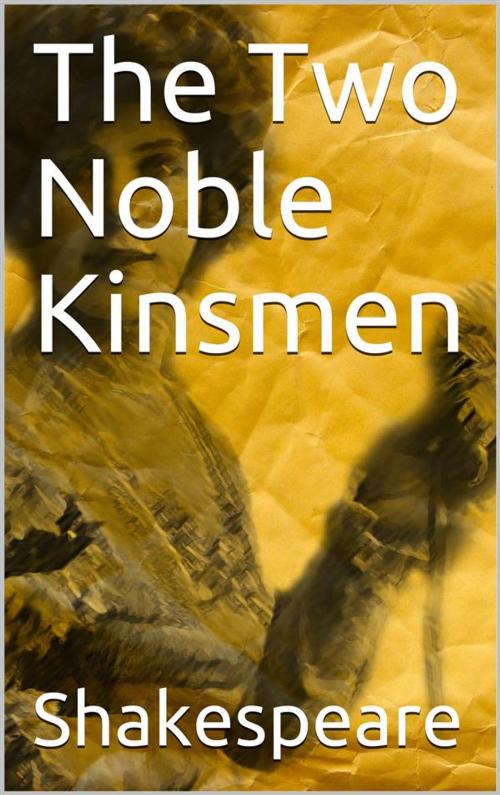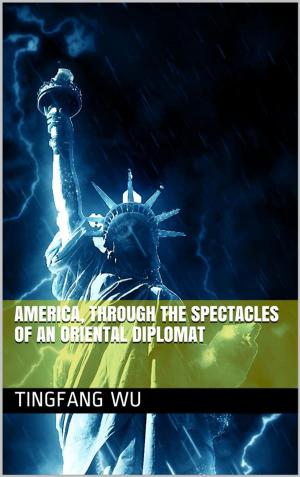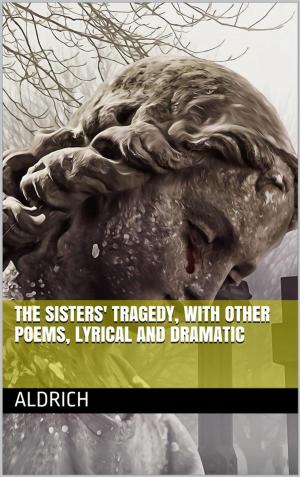| Author: | Shakespeare | ISBN: | 9788834128817 |
| Publisher: | iOnlineShopping.com | Publication: | June 1, 2019 |
| Imprint: | Language: | English |
| Author: | Shakespeare |
| ISBN: | 9788834128817 |
| Publisher: | iOnlineShopping.com |
| Publication: | June 1, 2019 |
| Imprint: | |
| Language: | English |
The Two Noble Kinsmen is a Jacobean tragicomedy, first published in 1634 and attributed to John Fletcher and William Shakespeare. Its plot derives from "The Knight's Tale" in Geoffrey Chaucer's The Canterbury Tales, which had already been dramatised at least twice before.
Formerly a point of controversy, the dual attribution is now generally accepted by scholarly consensus.
A prologue informs the audience that the play is based on a story from Chaucer.
Three queens come to plead with Theseus and Hippolyta, rulers of Athens, to avenge the deaths of their husbands by the hand of the tyrant Creon of Thebes. Creon has killed the three kings and refuses to allow them proper burial. Theseus agrees to wage war on Creon.
In Thebes, Palamon and Arcite, cousins and close friends, are bound by duty to fight for Creon, though they are appalled by his tyranny. In a hard-fought battle Palamon and Arcite enact prodigies of courage, but the Thebans are defeated by Theseus. Palamon and Arcite are imprisoned, but philosophically resign themselves to their fate. Their stoicism is instantly destroyed when from their prison window they see Princess Emilia, Hippolyta's sister. Both fall in love with her, and their friendship turns to bitter rivalry. Arcite is released after a relative intercedes on his behalf. He is banished from Athens, but he disguises himself, wins a local wrestling match, and is appointed as Emilia's bodyguard.
Meanwhile, the jailer's daughter has fallen in love with Palamon and helps him escape. She follows him, but he ignores her: still obsessed with Emilia. He lives in the forest half-starved, where he meets Arcite. The two argue, but Arcite offers to bring Palamon food, drink and armaments so that they can meet in an equal fight over Emilia.
The jailer's daughter, forsaken, has gone mad. She sings and babbles in the forest. She meets a troupe of local countrymen who want to perform a Morris dance before the king and queen. Local schoolmaster Gerald invites the mad daughter to join the performance. Theseus and Hippolyta appear, hunting. Gerald hails them, and they agree to watch the yokels perform a bizarre act for them, with the jailer's mad daughter dancing. The royal couple reward them.
Arcite returns with the food and weapons. After a convivial dinner with reminiscences, the two fight. Theseus and his entourage arrive on the scene. He orders that Palamon and Arcite be arrested and executed. Hippolyta and Emilia intervene, and so Theseus agrees to a public tournament between the two for Emilia's hand. Each warrior will be allowed three companions to assist them. The loser and his companion knights will be executed.
Read this complete famous novel for further interesting story....
The Two Noble Kinsmen is a Jacobean tragicomedy, first published in 1634 and attributed to John Fletcher and William Shakespeare. Its plot derives from "The Knight's Tale" in Geoffrey Chaucer's The Canterbury Tales, which had already been dramatised at least twice before.
Formerly a point of controversy, the dual attribution is now generally accepted by scholarly consensus.
A prologue informs the audience that the play is based on a story from Chaucer.
Three queens come to plead with Theseus and Hippolyta, rulers of Athens, to avenge the deaths of their husbands by the hand of the tyrant Creon of Thebes. Creon has killed the three kings and refuses to allow them proper burial. Theseus agrees to wage war on Creon.
In Thebes, Palamon and Arcite, cousins and close friends, are bound by duty to fight for Creon, though they are appalled by his tyranny. In a hard-fought battle Palamon and Arcite enact prodigies of courage, but the Thebans are defeated by Theseus. Palamon and Arcite are imprisoned, but philosophically resign themselves to their fate. Their stoicism is instantly destroyed when from their prison window they see Princess Emilia, Hippolyta's sister. Both fall in love with her, and their friendship turns to bitter rivalry. Arcite is released after a relative intercedes on his behalf. He is banished from Athens, but he disguises himself, wins a local wrestling match, and is appointed as Emilia's bodyguard.
Meanwhile, the jailer's daughter has fallen in love with Palamon and helps him escape. She follows him, but he ignores her: still obsessed with Emilia. He lives in the forest half-starved, where he meets Arcite. The two argue, but Arcite offers to bring Palamon food, drink and armaments so that they can meet in an equal fight over Emilia.
The jailer's daughter, forsaken, has gone mad. She sings and babbles in the forest. She meets a troupe of local countrymen who want to perform a Morris dance before the king and queen. Local schoolmaster Gerald invites the mad daughter to join the performance. Theseus and Hippolyta appear, hunting. Gerald hails them, and they agree to watch the yokels perform a bizarre act for them, with the jailer's mad daughter dancing. The royal couple reward them.
Arcite returns with the food and weapons. After a convivial dinner with reminiscences, the two fight. Theseus and his entourage arrive on the scene. He orders that Palamon and Arcite be arrested and executed. Hippolyta and Emilia intervene, and so Theseus agrees to a public tournament between the two for Emilia's hand. Each warrior will be allowed three companions to assist them. The loser and his companion knights will be executed.
Read this complete famous novel for further interesting story....















